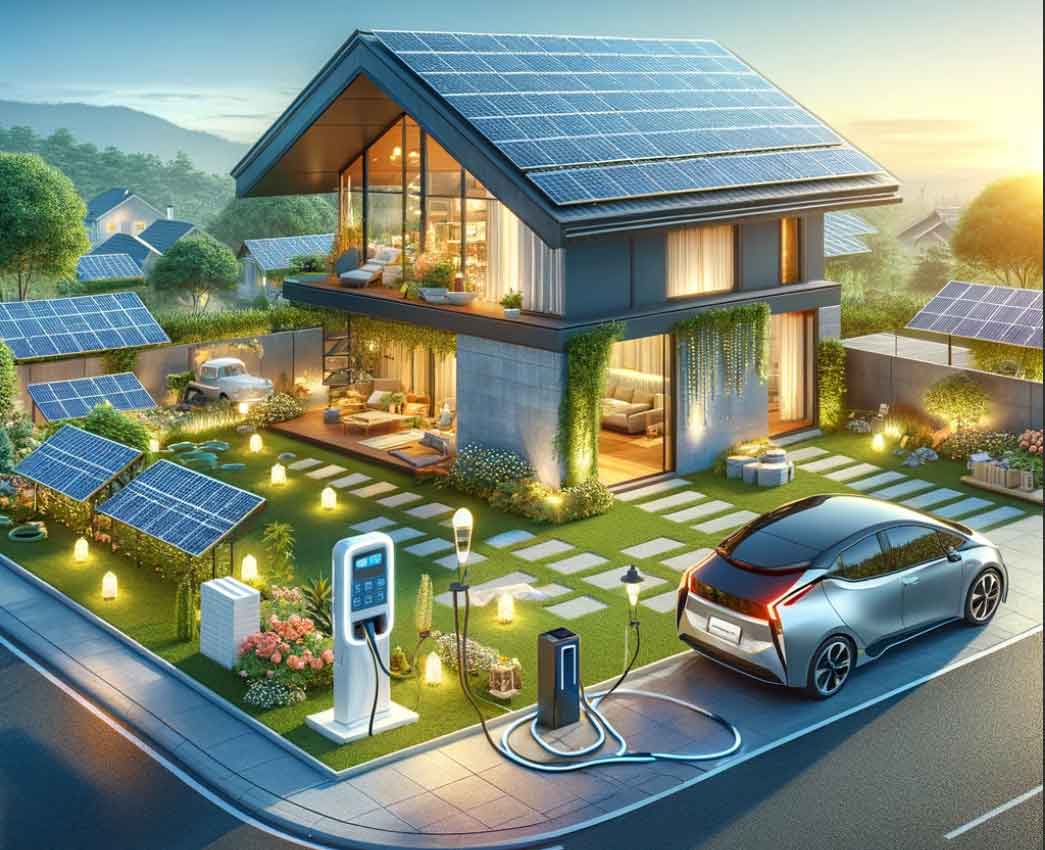
Integrating solar panels for your home design involves several key steps to ensure efficiency, aesthetic appeal, and practicality. Here’s a comprehensive approach:
- Assessment of Solar Potential and Needs: Before integrating solar panels for your home, assess your home’s solar potential. This involves understanding the solar irradiance in your area, the direction and angle of your roof, and any potential shading from trees or buildings. Tools like Google’s Project Sunroof can provide insights into your home’s solar potential.
- Energy Usage Analysis: Determine your household’s energy needs by analyzing your electricity bills. This helps in sizing the solar panels for your home appropriately.
- Designing the System:
- Panel Type and Size: Choose between monocrystalline, polycrystalline, or thin-film panels based on efficiency, cost, and appearance. Also, decide on the size of the panels and the total system based on your energy needs and roof space.
- Panel Placement: Optimal placement is usually on the roof facing south in the Northern Hemisphere (and north in the Southern Hemisphere) for maximum sunlight exposure. The tilt angle should be close to your location’s latitude.
- Aesthetic Integration: Work with your architect or designer to integrate solar panels for your home aesthetically. Options include in-roof systems where panels sit flush with the roof, solar shingles that double as roofing material, or panels that blend with the color of your roof.
- Choosing the Right Equipment:
- Inverters: Decide between string inverters, microinverters, or power optimizers based on your system’s needs and shading issues.
- Battery Storage: Consider integrating a battery system for energy storage, especially if you’re in an area with time-of-use electricity rates or frequent power outages.
- Compliance and Permits: Ensure that your solar installation complies with local building codes and standards. Obtain necessary permits from your local government or utility company.
- Installation: Hire a professional solar installer who is certified and experienced. They will ensure that the installation is done safely and efficiently, adhering to all electrical and safety codes.
- Connectivity and Monitoring: Set up connectivity to monitor your solar panels for your home performance. Many systems now come with apps or online dashboards to track energy production and usage.
- Maintenance and Upkeep: Although solar panels for your home require minimal maintenance, regular cleaning and occasional checks by a professional can maintain efficiency.
- Financing and Incentives: Investigate potential incentives, rebates, and financing options available in your area for solar panels for your home installation. These can significantly reduce the upfront costs.
Remember, integrating solar panels for your home not just about installing hardware; it’s about creating a sustainable energy solution that fits seamlessly into the design and function of your home.
